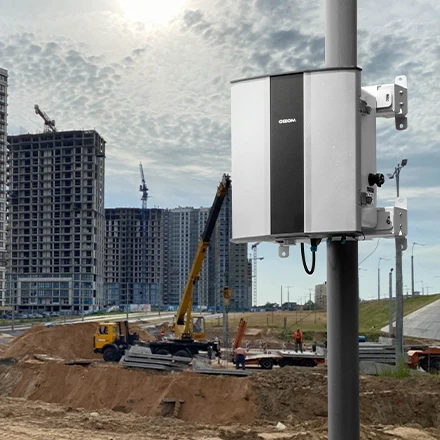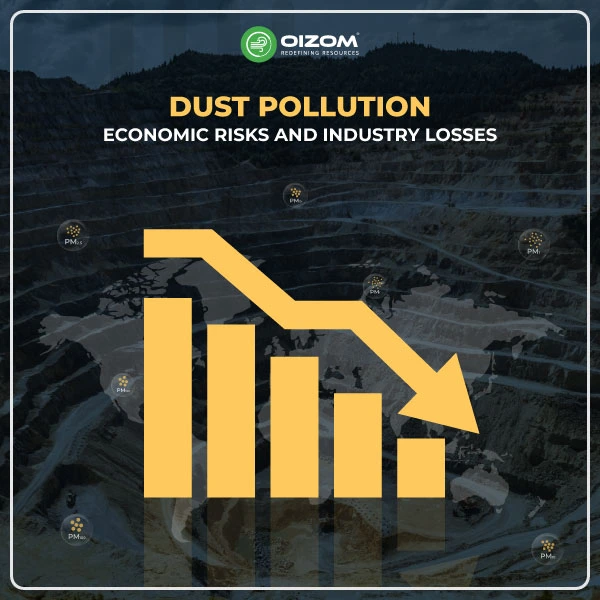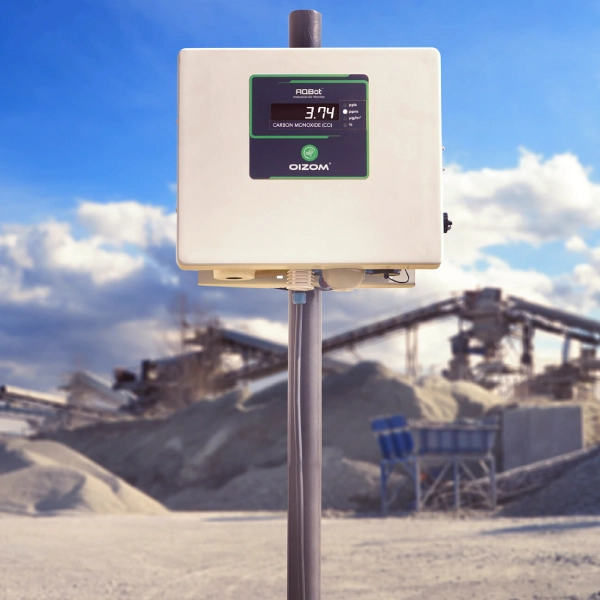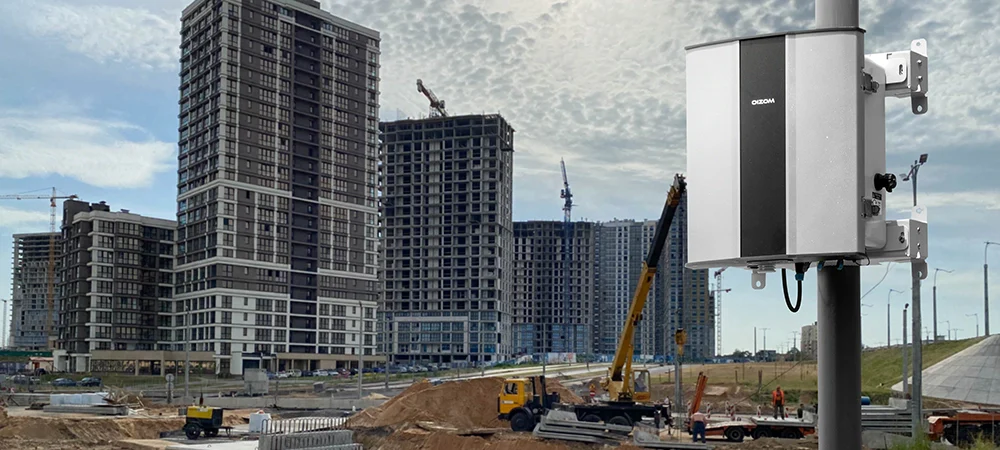
What if I tell you that you need dust monitors as much as fire alarms?
Just as fire alarms detect smoke and alert beforehand to take precautions against fire and save potential losses, dust monitors detect various dust parameters and alert you about excessive dust to take precautions.
Both devices save you from potential life losses in dangerous situations.
And as choosing the right and accurate fire alarm is necessary, the same is with choosing dust monitors.
We will explore dust monitoring, its importance, and how to choose the best dust monitor for your industry.
Why Dust Monitoring is Essential for Your Business
Dust is one of the primary reasons that can significantly risk workers’ health and safety by causing respiratory problems, lung diseases, and even cancer. Therefore, it is crucial to monitor your workplace’s air quality to ensure a safe working environment.
This is where dust monitors come into the picture. It helps you identify the type and concentration of dust particulates in the air. Later, you can use this data and take necessary measures to mitigate the harmful effects of dust particles.
Understanding the Different Types of Dust Monitoring Equipment
Dust monitoring solution is essential in many industries, especially to monitor particulate matter in mining and dust monitoring at construction sites to maintain occupational health & safety.
Different types of dust monitors are available to cater to different requirements and industries.
To choose what’s best for your industry, we shall go through the various types of dust monitoring equipment, each with its unique features and advantages:
- Real-time Dust Monitors
Real-time dust monitors are used to measuring airborne dust levels continuously, providing real-time information on the concentration of airborne particles. These are usually portable and battery-operated monitors and use active sampling technology.
Oizom’s compact sensor-based real-time dust monitors provide accurate results. Dustroid measures dust parameters like PM1, PM2.5, PM10, PM100, temperature, humidity, UV radiation, and ambient light. It has an IP66-grade enclosure for endurance against harsh weather conditions, which makes it capable of providing accurate data even in extreme climate conditions.
Perfect for: All industries with high dust ratio and working in extreme climate conditions.
- Personal Dust Monitors
Personal dust monitors are worn by workers and are used to monitor the concentration of airborne particles in their breathing zone.
They are ideal for use in businesses where workers are exposed to high levels of airborne particles, such as mining and construction sites. They typically use light-scattering technology or gravimetric sampling to measure dust levels.
But, here, the significant issues are the monitors’ battery needs constant charging, and workers feel uncomfortable constantly carrying them while working.
Perfect for: Underground mines
- High-Volume Samplers
High-volume samplers collect large quantities of airborne particles for laboratory analysis. They are ideal for use in areas with high airborne particle concentrations. They use a powerful motor to suck in large volumes of air, trapping the particles on a filter.
Perfect for: Construction and industry facilities
- Pump Suction Dust Monitors
Pump suction dust monitors are devices used to measure the concentration of airborne particles. These monitors use a pump to draw air through a filter, collecting particles as they pass through. The collected particles are then analysed to determine their size and concentration.
This type of dust monitor is for industries where high levels of airborne particulate matter can pose a health risk to workers.
They are also used in environmental monitoring to measure air quality and assess the impact of pollutants on human health and the environment.
Perfect for: Manufacturing, construction, mining
Comparing the Features of Dustroid Smart and Dustroid Pro
Dustroid Smart and Dustroid Pro are two of Oizom’s dust monitoring equipment that provide accurate and reliable data on air quality. Several factors can affect the accuracy of dust monitoring, ensuring precise and dependable measurements.
Dustroid Smart is a compact device that can monitor several dust particulate matters, including PM1, PM2.5, PM10, PM100 and other parameters such as light, UV, temperature, and humidity.
On the other hand, Dustroid Pro is a more advanced dust monitoring device with a heated inlet for compensating humidity and measuring PM1, PM2.5, PM10, PM100, temperature, UV, light, and humidity. Dustroid Pro also has an IP66-rated enclosure, making it suitable for harsh environments.
Some of the key differences between these two devices are:
- Humidity: Dustroid Pro has a heated inlet that mitigates the humidity present in the sample air and gives accurate readings. In contrast, Dustroid Smart does not have a heated inlet.
- Power: Dustroid Pro needs continuous and uninterrupted power to maintain the temperature of the heated inlet. Dustroid Smart can work on solar power.
- Price: The Dustroid Pro is expensive for its exceptional feature compared to the Dustroid Smart, making it suitable for larger organisations or those with a higher budget.
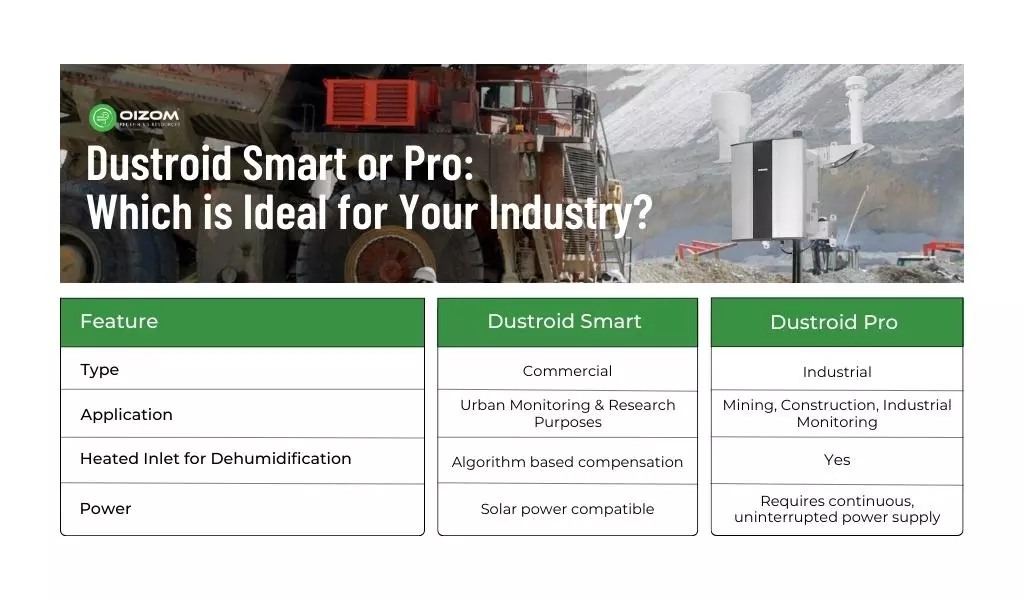
Advantages of Using Dustroid Smart and Dustroid Pro
The Dustroid Smart and Dustroid Pro have their own advantages, making them suitable for different environments.
Dustroid Smart is a compact and lightweight device that is easy to use and transport. It is ideal for small businesses or organisations that need a cost-effective solution for monitoring dust levels.
Dustroid Pro, on the other hand, is a high-end device that offers advanced features and functionalities. It has a heated inlet which makes it ideal for larger organisations or highly polluted and humid locations.
As of a February 2023 blog, effective haul road dust control in the construction or mining industry can increase Haul Road Productivity by 20-40%, decrease road maintenance by 50%, reduce fuel consumption by 15-30%, and decreases water consumption by 90-95%
Key Features of Dustroid Smart and Dustroid Pro
Dustroid Smart and Dustroid Pro Dustroid Smart and Pro come with various features that make them reliable for dust monitoring in different environments. Some of the fundamental features of these devices are as follows:
- Real-time monitoring: Both devices provide real-time data of accurate dust monitoring.
- Multi-parameter detection: Both devices can detect PM1, PM2.5, PM10, PM100, temperature, light, and UV in the air.
- Wireless connectivity: Both devices come with wireless connectivity options, including Wi-Fi, Bluetooth, and cellular connectivity.
- Installation: Both devices are easy to install using a plug-and-play design.
- Data logging: Both devices can log and store data for later analysis.
- Portable: Both devices are easy to transport. Additionally, versatile mounting is available to install a device on a pole, wall, fence, or any existing structure.
- Calibration: Both devices are calibrated by a third-party nodal agency, reference station co-location, and spot calibration. This adds up to 3-level calibration.
- User-friendly interface: Both devices feature a user-friendly interface that is easy to operate and understand.
The Advantages of Using Industrial-Grade Dust Monitor
Industrial-grade dust monitoring device provides many advantages, including:
- Accurate measurement: Industrial-grade dust monitoring equipment is designed to provide precise and reliable measures of airborne particulate matter. Oizom’s instruments use advanced technologies and sensors to ensure that the readings are accurate and consistent.
- Compliance: Using industrial-grade dust monitors can help companies comply with local, state, and federal regulations related to air quality and particulate matter. This can help prevent fines and other penalties.
- Health and safety: Exposure to high levels of dust can cause respiratory problems and other health issues. Industrial-grade dust monitoring devices can help identify areas where dust levels are high, allowing companies to take measures to maintain occupational health & employees.
- Cost-effective: Investing in industrial-grade dust monitoring devices can be cost-effective in the long run. By identifying areas where dust levels are high, companies can take measures to reduce dust emissions and improve air quality, potentially reducing health and environmental risks and improving productivity.
- Automotive Dust Suppression: Oizom’s dust monitors enable automatic dust suppression methods to maintain dust levels once the limit is crossed.
- Environmental protection: High levels of dust can also harm the environment, contaminating soil and water resources. These dust monitors can help businesses identify areas with high dust emissions and take mitigation measures to minimise their impact on the environment.
- Real-time monitoring: Many industrial-grade dust monitoring devices are equipped with real-time monitoring capabilities like Oizom, allowing companies to track dust levels continuously. This can help identify trends and patterns over time, allowing companies to take proactive measures to reduce dust emissions and improve air quality.
- Data analysis: Industrial-grade dust monitoring equipment can also provide data analysis capabilities, allowing companies to identify correlations and trends in dust levels. This can help identify the root causes of dust emissions, allowing companies to take measures to address the underlying issues.
Overall, industrial-grade dust monitoring solutions can provide many benefits, from improved compliance with regulations and protection of human health and the environment to cost savings and increased productivity.
Factors to Consider When Choosing the Best Dust Monitor
When choosing the right dust monitoring equipment for your business, you need to consider several factors, including:
- Type of dust: Different types of dust require different monitoring equipment.
- Data logging: The data logging capacity of the dust monitoring device should match your business’s requirements.
- Portability: The size and weight of the dust monitors should be suitable for your business’s environment.
- Accuracy: The dust monitoring device should provide accurate and reliable data on air quality.
- Cost: The cost of the dust monitoring solution should fit your budget.
- Ease of use: The dust monitors should be easy to install and configure, and the data should be easy to read and understand.
Tips for Maintaining Your Dust Monitoring Equipment
It is crucial to maintain your dust monitoring solution to ensure its accuracy and longevity. Here are some tips to help you keep your equipment in top condition:
- Calibrate your equipment regularly: Dust monitors must be calibrated periodically for accurate measurements. Calibration involves comparing the readings from the instrument to a known standard to adjust for any deviations. Calibration should be done at least once a year and more often if the equipment is used frequently or subjected to harsh conditions.
- Clean the sensors: The dust monitoring device measures the concentration of particulate matter in the air using sensors. Over time, these sensors can become coated with dust and other particles, which can interfere with their accuracy. Cleaning the sensors at certain intervals can help remove any build-up and ensure accurate readings.
- Store the equipment properly: Dust monitoring solution is sensitive to temperature and humidity, so it should be stored in a dry, climate-controlled environment when not in use. Avoid exposing the equipment to extreme temperatures or direct sunlight, which can damage the sensors and other components.
- Replace worn or damaged parts: Over time, parts of the dust monitoring equipment may wear out or become damaged. It’s important to replace these parts as soon as possible to ensure accurate readings and prevent further damage to the equipment.
- Follow the manufacturer’s instructions: Different types of dust monitoring devices may have specific maintenance requirements, so it’s important to read and follow the manufacturer’s instructions carefully. This will help to ensure that your equipment stays in good working condition and provides accurate measurements.
After reading the key comparison and benefits of both dust monitors, now you might be clear about which dust monitor is right for your business.

